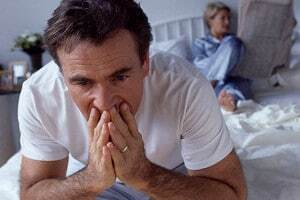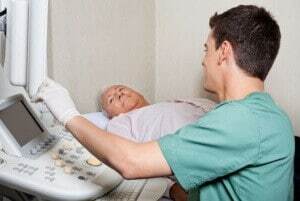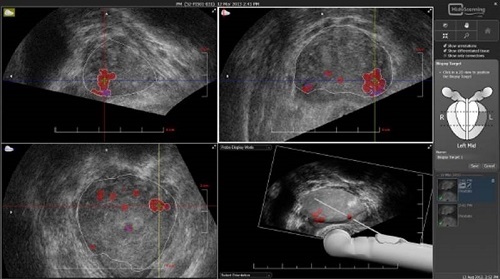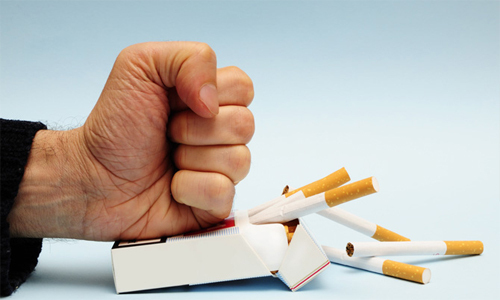How to cure prostate adenoma without surgery excites many men. Modern medicine has developed a number of drugs and technologies for the stronger sex, which will help to avoid surgical intervention. Adenoma of the prostate is detected in men over the age of forty. With increasing age, the percentage of patients increases. In men older than eighty years, adenoma is detected in 90% of cases.

Etiology of the disease
Prostate adenoma is a very complex pathology and causes a lot of inconvenience in men.
Adenoma is a benign enlargement of the gland. The adenoma itself is not so dangerous. Dangerous complication, which it causes.
With constant pressure on the ureter, the man accumulates and thickens the urine in the bladder. Urine contains a large number of nitrogen salts. When the body is in the body for a long time, it causes poisoning of the body. This compound is especially dangerous for the kidneys. Kidney tissue under the action of salts is destroyed.
A patient, who for a long time ignores the treatment of the prostate, risks acquiring a number of chronic pathologies. The poisoning on the gastrointestinal tract is quickly affected. More than half of men with prostatitis have cholecystitis, gastritis, and urolithiasis. Any solid neoplasms in the organs of a man can be removed only surgically.
Causes Affecting the Onset of the Disease
Prostate adenoma may develop due to a variety of reasons. Doctors divide the causes of prostatitis into two large groups:
- Medical factors.
- Environmental factors.
 Medical factors are diverse. The appearance of adenoma is affected by chronic diseases of the kidney and urogenital system. The presence of viral diseases can lead to inflammation of the prostate and its further proliferation. The hormonal background directly affects the prostate gland. With any malfunction in the work of hormones, iron begins to actively release the hormone. To cope with increased iron loading begins to increase in size. Age changes in the body affect the structure of the adenoma. As the age increases, the male has a change in the internal organs. The genitourinary system begins to malfunction, the prostate can transmit ureters when the bladder is lowered. The presence of the disease in other family members can pass by heredity. Men whose immediate relatives suffer from prostate adenoma are twice as likely to get sick than people who do not have a prostatitis in their family history.
Medical factors are diverse. The appearance of adenoma is affected by chronic diseases of the kidney and urogenital system. The presence of viral diseases can lead to inflammation of the prostate and its further proliferation. The hormonal background directly affects the prostate gland. With any malfunction in the work of hormones, iron begins to actively release the hormone. To cope with increased iron loading begins to increase in size. Age changes in the body affect the structure of the adenoma. As the age increases, the male has a change in the internal organs. The genitourinary system begins to malfunction, the prostate can transmit ureters when the bladder is lowered. The presence of the disease in other family members can pass by heredity. Men whose immediate relatives suffer from prostate adenoma are twice as likely to get sick than people who do not have a prostatitis in their family history.
The impact of external factors affects the development of the disease to a greater extent. If the frequency of sexual intercourse is impaired, a man may experience stagnation of semen. Stagnation leads to inflammation of the testes and the vas deferens. The adenoma becomes inflamed and grows pathologically. Patients whose lifestyle is associated with long stay on the spot and driving by car, risk getting inflammation of the prostate for the fifth year of this lifestyle. A low-mobility profession leads to the formation of hemorrhoids and proliferation of prostate adenoma. Various trauma to the genitourinary system can trigger the onset of the disease. Especially dangerous are the bruises of internal organs. There may be a squeezing or falling of the urinary canals and the bladder. The bladder lies on the prostate and causes an inflammatory process.
Improper food preferences and frequent intake of alcoholic beverages have a negative impact on the entire body. Frequent drinking of beer provokes diseases of the kidneys and urinary system. Oily foods and irregular meals can affect weight gain. In young men with a body mass index greater than 26, prostate adenoma is detected in 95% of cases.
What symptoms suggest about the presence of the disease
A man can independently suspect that he has a pathology. Attention should be paid to the following processes:
- How does the bladder emptying and urine quality occur?
- Features of ejaculation;
- Presence of various pains during urination.
 When going to the toilet a man can notice that the process of urination is unusual. Excretion of urine does not begin immediately and causes painful sensations in the lower part of the abdominal cavity. The process of emptying lasts much longer than usual. There are frequent urge to urinate, which does not always lead to urinary excretion.
When going to the toilet a man can notice that the process of urination is unusual. Excretion of urine does not begin immediately and causes painful sensations in the lower part of the abdominal cavity. The process of emptying lasts much longer than usual. There are frequent urge to urinate, which does not always lead to urinary excretion.
The frequency of urge increases at night. Urine can spill on a droplet involuntarily. There is a chronic urinary retention. In the urine, the patient may notice an impurity of blood. With increased physical activity or prolonged walking, the blood in the urine increases. The urine becomes more viscous and dark. After going to the toilet, the man has a desire to urinate.
Prostate adenoma with a strong increase in size strongly presses on the testes. The sexual intercourse in the patient is shortened. Ejaculation process is faster. The craving for sexual intercourse in men is reduced. During the act, pain may occur in the lumbar region.
Patients report loss of appetite and constant thirst. In some cases, dry mouth occurs. Men with prostate adenoma suffer from prolonged constipation. The stool becomes dry. Fluid from fecal matter is absorbed by the walls of the intestine. Some patients may have intestinal obstruction.
Diagnosis of
If a man has one or more symptoms, consult a doctor immediately. The patient must visit a urologist. The doctor will conduct a comprehensive examination and write out the necessary tests. The diagnosis is carried out according to the following scheme:
- The patient has an anamnesis. The presence of urine content, blood admixtures, frequency to urge is revealed;
- Assign urine and blood tests. The doctor needs to find out whether there is intoxication in the body. Excludes poisoning of internal organs;
- A man needs to undergo ultrasound examination;
- The urologist performs a rectal finger examination;
- The ratio of the results of analysis and examination leads to an accurate diagnosis.
Then the doctor should establish the stage of the disease. Depending on the stage, medication or surgical intervention is prescribed.

Stages of the disease
Prostate adenoma occurs in several stages. The presence of a variety of symptoms helps to establish exactly what process the disease is in. Prostate adenoma has three stages:
- Compensated;
- Subcompensated form;
- Decompression.
The first stage of prostate disease is established when a man finds frequent trips to the toilet. Devastation of the bladder in the patient occurs at this stage completely. The man is concerned about the decrease in the volume of the jet and frequent trips to the toilet. Compensated adenoma is easily amenable to drug treatment at home. If the disease is found in the first stage, the patient has lower risks of additional pathologies in tissues and organs.
A subcompensated form is detected in a patient with an incomplete bladder emptied. In the second stage, the patient has more frequent trips to the toilet. After visiting the toilet, there is a desire to urinate. When palpation of the bladder, fluid stagnation is detected. The outflow of urine is hampered by the atony of the walls of the bladder. In the lower part of the bladder, a fold is formed, in which the urine is placed. The withdrawal of fluid from the fold is possible when the pressure is released from the neck of the bladder. Patients suffering from a subcompensated stage need complex therapy. The patient is prescribed medication and apparatus therapy. At the second stage the doctor can avoid surgical intervention.
 The decompressed stage of prostate adenoma appears as an enlarged bladder in an ultrasound study. At the third stage of the pathological process, the walls of the bladder are strongly stretched, the muscle layer thinens. The patient suffers from urinary incontinence. The fluid is eliminated from the bladder involuntarily. A man is forced to constantly wear a foot urine receiver. The third stage is only surgical.
The decompressed stage of prostate adenoma appears as an enlarged bladder in an ultrasound study. At the third stage of the pathological process, the walls of the bladder are strongly stretched, the muscle layer thinens. The patient suffers from urinary incontinence. The fluid is eliminated from the bladder involuntarily. A man is forced to constantly wear a foot urine receiver. The third stage is only surgical.
Therapy by various methods
There are three ways to cure prostate adenoma. Specialist-urologist appoints a treatment scheme individually for each man, depending on the stage of the disease:
- medication;
- hardware therapy;
- operation for adenoma.
Drug therapy should be studied in detail, it helps to achieve long-term remission and significantly improve a man's standard of living. In prostate adenoma, specialists are faced with the need to reduce prostate volume and improve urinary output.
To improve the outflow of urine, doctors use drugs from the group of alpha-blockers. The medicine helps to remove the tone from the smooth muscles of the neck of the bladder and prostate. The resistance of the walls becomes smaller, the fluid freely passes through the urinary tract. The first result is visible on the 14-16 day of drug treatment. The most popular among doctors are doxazosin and tamsulosin. Both drugs are manufactured at 2 and 4 g. The dosage is selected by the doctor. Preference is given to tamsulosin, due to minimal side effects. Patients taking alpha-blockers may experience constant dry mouth and thirst. Doxazosin can cause a sharp drop in blood pressure and weakness.
Finasteride helps to reduce prostate volume. The drug is an inducer of reductase. Inductors of reductase are the only group of drugs that allow to reduce the prostate without surgical intervention. Visible result of the drug gives the third month of treatment. It is necessary to take into account the side effects caused by finasteride. The drug can cause a violation of the erectile ability of men, reduce sexual desire. Some patients experience loss of ejaculation. The medication is prescribed for men who have an adenoma of more than 30 ml. Finasteride is prescribed in the second stage of prostatic adenoma in combination with alpha-blockers.
Medication can last from three months to six months. This therapy allows to achieve long-term remission and to avoid surgical intervention.
The apparatus therapy is carried out by the action of waves on the adenoma. Under the influence of waves, the walls of the prostate adenoma are compressed, the pressure on the neck of the bladder falls. A doctor can prescribe from 5 to 10 courses of apparatus therapy.
Cure prostate adenoma at home is possible. It is necessary to consult a urologist for advice. The doctor will choose the right scheme and help get rid of the disease.



